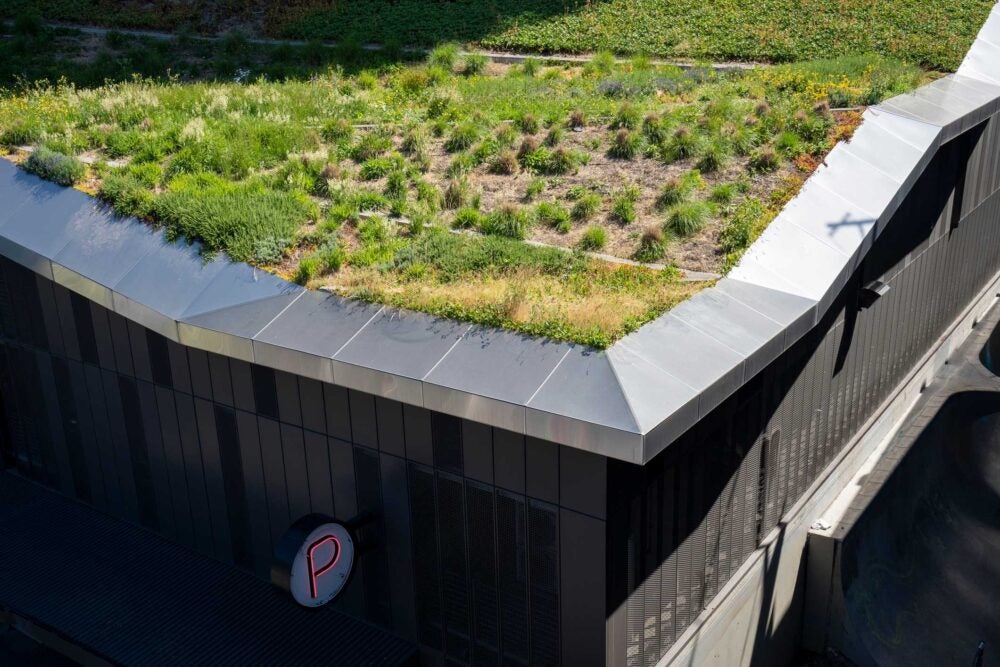
Blog
Technological Innovations Shaping the Future of Commercial Real Estate
Blog
The Steers Center for Global Real Assets (formerly Real Estate) is focused on the new economy of real assets, which is a future where real estate and infrastructure investment are integrated. Energy transition is a significant component of this new economy and how our industry is able to move toward a more sustainable future.
This article explores how new infrastructure projects can significantly enhance your real estate portfolio. By understanding the interplay between infrastructure development and real estate, you can make informed investment decisions that capitalize on growth opportunities.
Infrastructure projects are catalysts for economic growth, often leading to increased property values in their vicinity. Transportation improvements, such as new highways, bridges, and public transit systems, make areas more accessible and attractive to both residents and businesses. For instance, the extension of the Washington Metro’s Silver Line has spurred development in Northern Virginia, elevating property values along the route.
Quality-of-life enhancements, like parks and cultural institutions, also boost real estate values. The High Line park in New York City transformed an old railway into a public space, leading to a surge in nearby property prices. These projects not only improve aesthetics but also foster community engagement, making neighborhoods more desirable.
To capitalize on infrastructure developments, investors should monitor upcoming projects and identify areas poised for growth. Investing early in regions slated for significant infrastructure improvements can lead to substantial returns. Collaborating with local real estate professionals and urban planners can provide insights into future developments.
However, it’s crucial to assess potential risks. Infrastructure projects can face delays or changes in scope, which may temporarily affect property values. Diversifying investments across different locations and property types can mitigate these risks.
Evaluating the ROI of infrastructure-driven real estate involves comparing potential returns with other market options. Properties near new infrastructure often appreciate faster than those in stagnant areas. Factors to consider include location, type of infrastructure, and timing.
Investing before or during the early stages of a project can yield higher returns as property values tend to rise upon completion. For example, properties near the BeltLine project in Atlanta saw significant appreciation even before the project’s completion.
At the Steers Center for Global Real Assets, the future of the industry lies in the integration of real estate and infrastructure within the broader framework of real assets. This convergence reflects a shift toward more resilient and sustainable urban development. A key component of this evolution is the energy transition, which influences how real estate professionals evaluate long-term value. Investments in renewable energy infrastructure—such as solar grids, EV charging networks, and energy-efficient transportation—are increasingly seen not just as environmental imperatives but as financial opportunities. These assets enhance the functionality and appeal of real estate developments while aligning with broader decarbonization goals. Educating the next generation of real estate leaders to recognize and capitalize on these synergies is central to the Steers Center’s mission. As infrastructure and sustainability become inextricably linked, those who understand both the financial and environmental returns of real assets will be best positioned to lead.
Zoning laws can profoundly impact real estate investments in infrastructure-focused markets. Changes in zoning regulations may allow for higher-density developments or mixed-use properties, enhancing investment potential. Conversely, restrictive zoning can limit development opportunities.
Staying informed about local zoning ordinances and participating in community planning meetings can provide a competitive edge. Consulting with legal experts ensures compliance and helps navigate any regulatory challenges.
Technology plays a pivotal role in optimizing real estate investments linked to infrastructure projects. Data analytics tools can help investors analyze market trends, assess risks, and identify lucrative opportunities. Platforms like CoStar and Zillow offer comprehensive market data to inform decision-making.
Virtual reality and 3D modeling technologies allow investors to visualize properties and infrastructure developments, facilitating better planning and marketing strategies. Embracing technological advancements can enhance efficiency and provide valuable insights.
New infrastructure projects present unique opportunities to boost your real estate portfolio. By understanding their impact, strategically investing, and leveraging technology, you can maximize returns and mitigate risks. As infrastructure continues to shape our cities, staying informed and proactive is key to riding the wave of growth.
Blog
Blog
Blog


